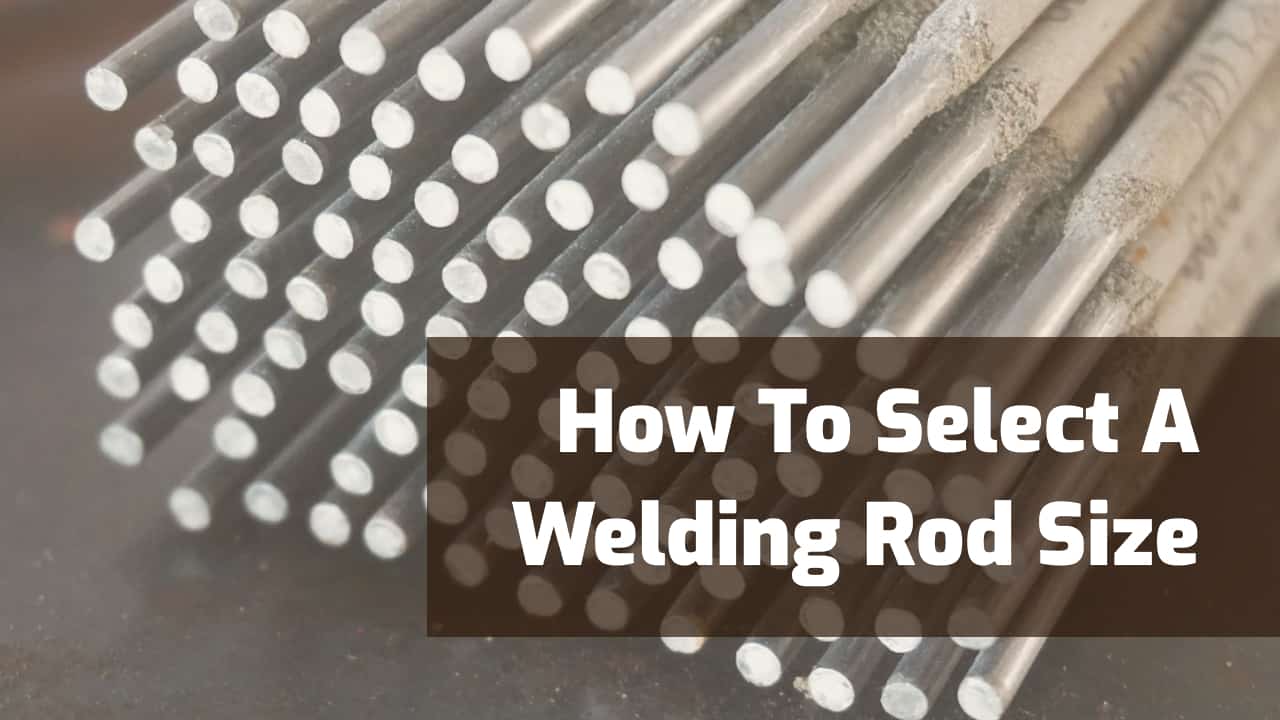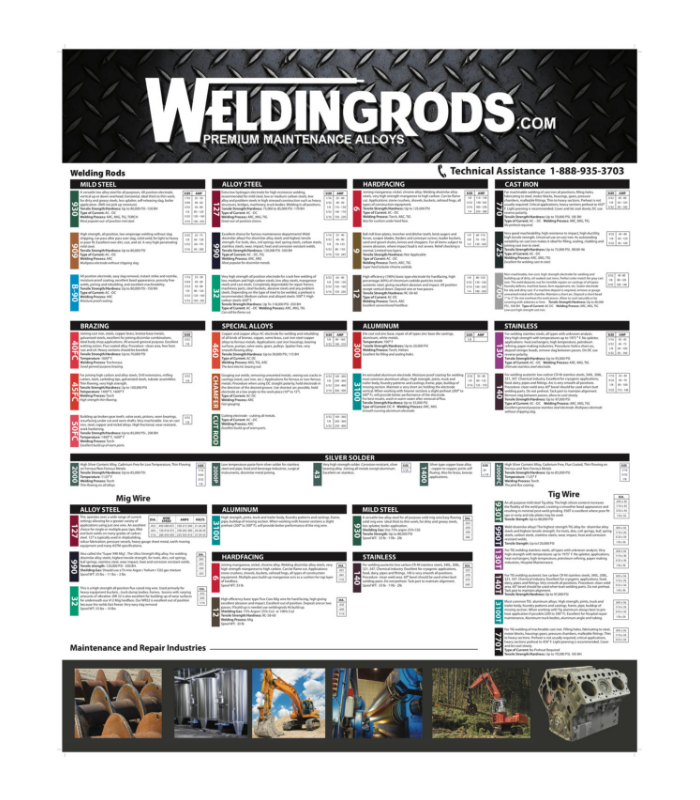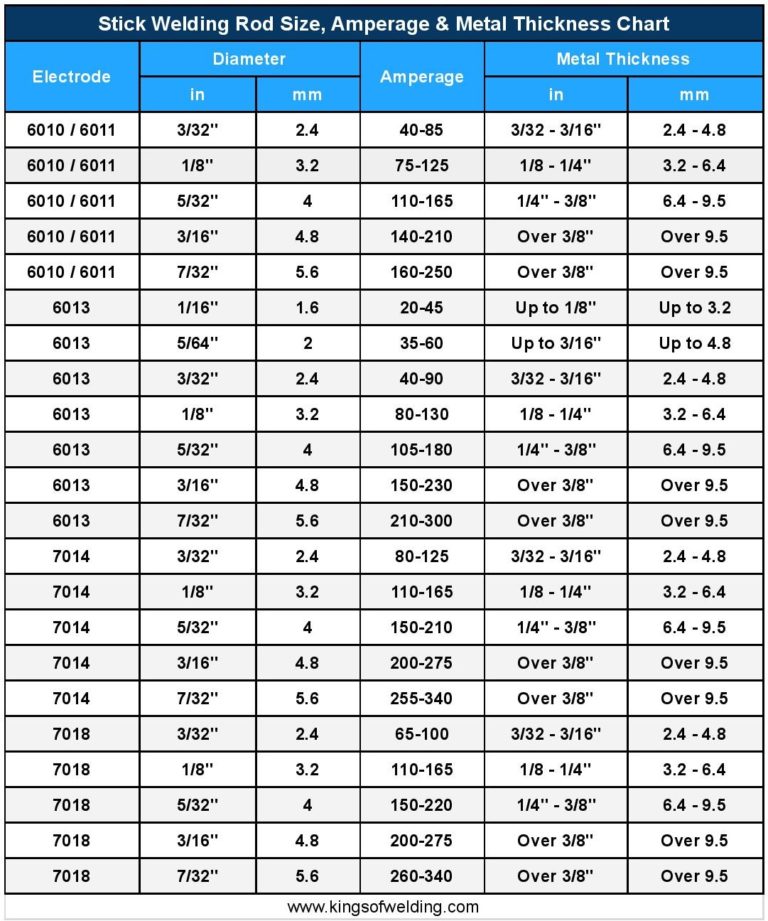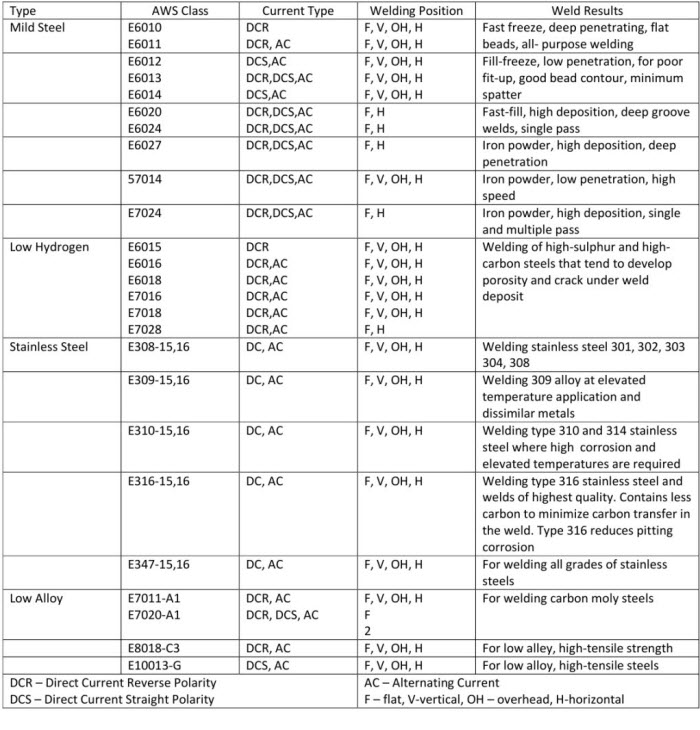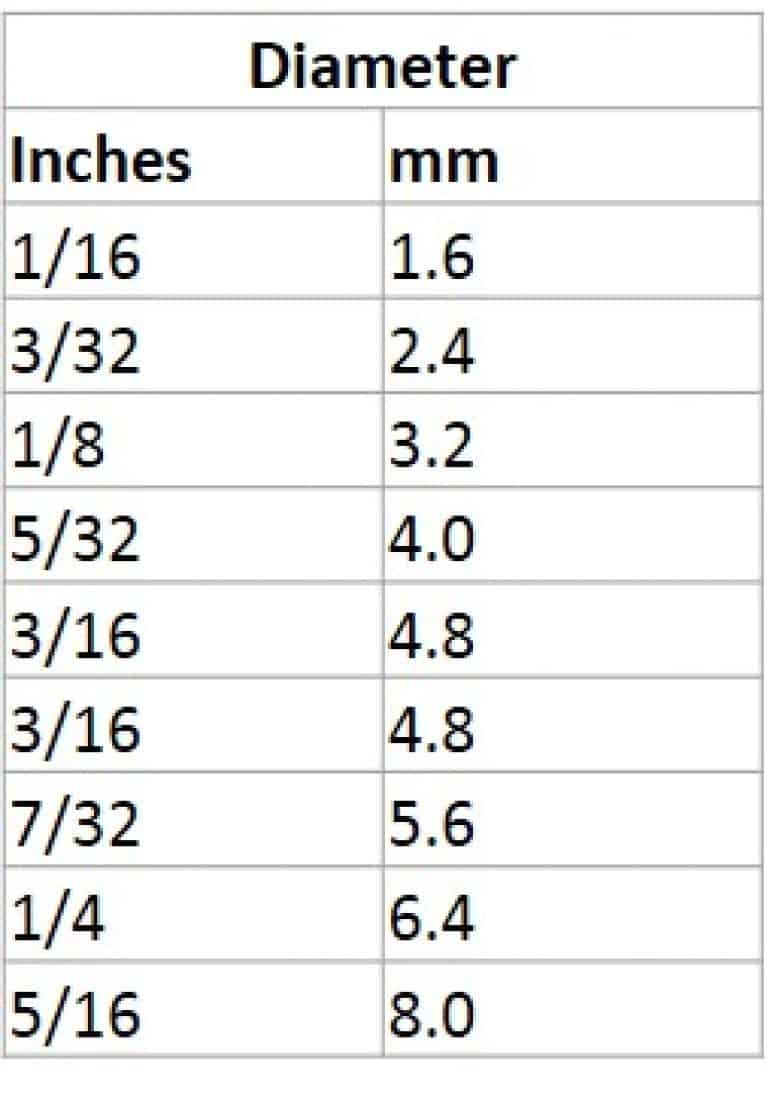Avoiding contamination and moisture absorption. Web welding rod sizes explained. We have gone into this in more detail below. Web what are welding rods? Web the number of welding rods in a packet or in a kg will depend on the diameter and the length of the rods.
Web the most popular welding rod sizes for home welders are 3/32″, 1/8″, and 5/32″, as they are suitable for common projects. This size is used for carbon steel. You can’t use a rod that doesn’t run on your power supply. Ensures the electrode meets the required joint strength. How do you know what size welding rods to use?
We have gone into this in more detail below. Welding rods help in joining metals together. Web see our chart and guide on how to select the right welding rod size diameter and amperage depending on metal thickness and other variables. For example, the esab 6013 electrodes, having a 2.5mm diameter and 350mm length are sold in 5kg packets most commonly. The table is published in aws a5.1 specification.
I'm still new to stick welding and have been looking around for a chart for quite a while that would recommend what size rod to use at what amps for a certain base metal thickness. For example, the esab 6013 electrodes, having a 2.5mm diameter and 350mm length are sold in 5kg packets most commonly. So, choosing the appropriate welding rod size is crucial. Click here to see the welding rod chart in pdf format. The tensile strength (wikipedia) which is the pulling force the metal can withstand before breaking. 3.2 how welding positions affect electrode size choice. Contents [ show] common stick welding rods. 2.1 how is welding rod diameter measured? Proper rod storage to retain performance. Ensures the electrode meets the required joint strength. The welding rod is used to carry electrical current through the workpiece and join two pieces. This chart provides valuable information on which rod size to use for different metal thicknesses and welding positions. We have gone into this in more detail below. In this article, i’ll cover the most common welding rod sizes to help you pick the most suitable one for your needs. Web welding rod sizes explained.
Understanding Stick Welding Rod Classification Is Essential In Selecting The Correct Electrode For Your Welding Needs.
In this article, i’ll cover the most common welding rod sizes to help you pick the most suitable one for your needs. Whether you’re a beginner or an established welder, you need to acquaint yourself with knowledge of welding rod sizes. Welding rods help in joining metals together. So, choosing the appropriate welding rod size is crucial.
Web The Most Common Welding Rod Sizes Are Typically Measured In Inches And Range From 1/16 Inch To 5/16 Inch Or Larger.
Anything up to 1/4″ (6.35 mm) thick would be best welded with a 1/8″ (3.2 mm) electrode, and thicker metal would use 5/32″ (4.0 mm). Proper rod storage to retain performance. The tensile strength (wikipedia) which is the pulling force the metal can withstand before breaking. You have fewer choices of electrodes, depending on your welding position:
Web For Material Smaller Than 1/8″ (3.2 Mm), A 3/32″ (2.4 Mm) Rod Will Be A Good Choice.
For example, the esab 6013 electrodes, having a 2.5mm diameter and 350mm length are sold in 5kg packets most commonly. Plus you'll get the most complete welding rod chart on the internet in pdf! How do you know what size welding rods to use? The welding industry has adopted the american welding society’s classification number series for welding rod electrodes.
You Can’t Use A Rod That Doesn’t Run On Your Power Supply.
2.1 how is welding rod diameter measured? Web this chart provides an overview of the most common stick welding rod sizes and their corresponding classifications. These guidelines can vary between different manufacturers so always check the manufacturer’s guidelines if possible. Web our powerful calculator let's you easily determine which stick electrode you need.

